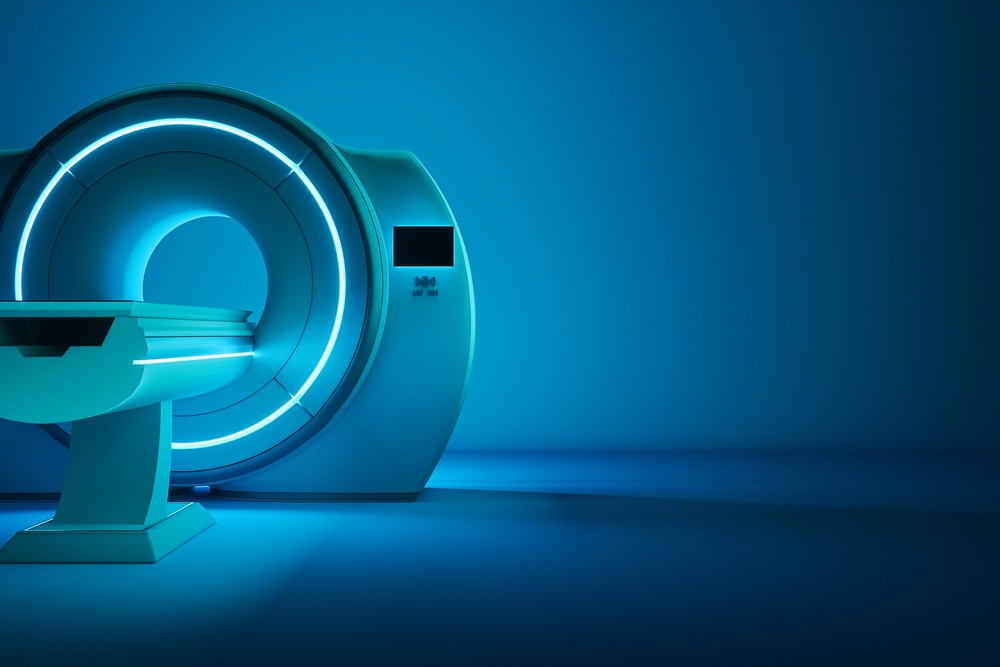Prostate Cancer Treatment
When the time comes for treatment the RMCC prostate cancer care team will develop a plan that's right for you.

Latest Treatment for Men with Advanced Stage Prostate Cancer
Men with metastatic castration-resistant prostate cancer (mCRPC), an advanced stage of prostate cancer, now have access to a promising treatment that combines new diagnostic imaging technology with a therapy recently approved by the US Food and Drug Administration that targets and destroys prostate cancer cells.
This treatment is designed to track and treat prostate cancer that has spread throughout the body and grown resistant to other treatment. This therapy is a breakthrough that could prolong survival for men with advanced prostate cancer.

Not Every Patient Starts Cancer Treatment Right Away
You may choose active surveillance if the risks and possible side effects of treatment outweigh the possible benefits. Your doctor may suggest active surveillance if you’re diagnosed with early stage prostate cancer that seems to be slowly growing. Your doctor may also offer this option if you are older or have other serious health problems.
Choosing active surveillance doesn’t mean you’re giving up. It means you’re putting off the side effects of surgery or radiation therapy. Having surgery or radiation therapy is no guarantee that a man will live longer than a man who chooses to put off treatment.
If you and your doctor agree that active surveillance is a good idea, your doctor will check you regularly (such as every 3 to 6 months, at first). After about one year, your doctor may order another biopsy to check the Gleason score. You may begin treatment if your Gleason score rises, your PSA level starts to rise, or you develop symptoms. You’ll receive surgery, radiation therapy, or another approach.
Active surveillance avoids or delays the side effects of surgery and radiation therapy, but this choice has risks. For some men, it may reduce the chance to control cancer before it spreads. Also, it may be harder to cope with surgery or radiation therapy when you’re older.
If you choose active surveillance but grow concerned later, you should discuss your feelings with your doctor. Another approach is an option for most men.
Radiation Therapy for Prostate Cancer
Radiation therapy is an option for men with any stage of prostate cancer. Men with early stage prostate cancer may choose radiation therapy instead of surgery. It also may be used after surgery to destroy any cancer cells that remain in the area. In later stages of prostate cancer, radiation treatment may be used to help relieve pain.
Radiation therapy (also called radiotherapy) uses high-energy rays to kill cancer cells. It affects cells only in the treated area.
Doctors use two types of radiation therapy to treat prostate cancer. Some men receive both types:
Both internal and external radiation can cause impotence. You can talk with your doctor about ways to help cope with this side effect.
External Radiation
Internal Radiation
Hormone Therapy for Prostate Cancer
A man with prostate cancer may have hormone therapy before, during, or after radiation therapy. Hormone therapy is also used alone for prostate cancer that has returned after treatment.
Male hormones (androgens) can cause prostate cancer to grow. Hormone therapy keeps prostate cancer cells from getting the male hormones they need to grow. The testicles are the body’s main source of the male hormone testosterone. The adrenal gland makes other male hormones and a small amount of testosterone.
Hormone therapy uses drugs or surgery:
- Drugs: Your doctor may suggest a drug that can block natural hormones:
- Luteinizing hormone-releasing hormone (LH-RH) agonists: These drugs can prevent the testicles from making testosterone. Examples are leuprolide, goserelin, and triptorelin. The testosterone level falls slowly. Without testosterone, the tumor shrinks, or its growth slows. These drugs are also called gonadotropin-releasing hormone (GnRH) agonists.
- Antiandrogens: These drugs can block the action of male hormones. Examples are flutamide, bicalutamide, and nilutamide.
- Other drugs: Some drugs can prevent the adrenal gland from making testosterone. Examples are ketoconazole and aminoglutethimide.
- Surgery: Surgery to remove the testicles is called orchiectomy.
After orchiectomy or treatment with an LH-RH agonist, your body no longer gets testosterone from the testicles, the major source of male hormones. Because the adrenal gland makes small amounts of male hormones, you may receive an antiandrogen to block the action of the male hormones that remain. This combination of treatments is known as total androgen blockade (also called combined androgen blockade). However, studies have shown that total androgen blockade is no more effective than surgery or an LH-RH agonist alone.
Doctors usually treat prostate cancer that has spread to other parts of the body with hormone therapy. For some men, the cancer will be controlled for two or three years, but others will have a much shorter response to hormone therapy. In time, most prostate cancers can grow with very little or no male hormones, and hormone therapy alone is no longer helpful. At that time, your doctor may suggest chemotherapy or other forms of treatment that are under study. In many cases, the doctor may suggest continuing with hormone therapy because it may still be effective against some of the cancer cells.
PSMA Therapy for Advanced Prostate Cancer
RMCC Among First in Colorado to Offer Breakthrough Treatment for Advanced Prostate Cancer Patients
Advanced prostate cancer, also called metastatic prostate cancer, begins in the prostate gland and spreads to other parts of the body. Long-term survival (5 to 10 years after diagnosis) from prostate cancer is very high when prostate cancer is diagnosed early and found in only the prostate and nearby parts of the body, but survival duration is significantly shorter after diagnosis of advanced prostate cancer.
At Rocky Mountain Cancer Centers, men with metastatic castration-resistant prostate cancer (mCRPC), an advanced stage of prostate cancer, now have access to a promising treatment that combines new diagnostic imaging technology with a therapy recently approved by the US Food and Drug Administration that targets and destroys prostate cancer cells.
What Advanced Prostate Cancer Patients Can Expect
Eligible patients will be scheduled for an imaging exam and an injection of a new tracing agent called Pylarify® which provides clearer and earlier visibility of tumors than other imaging technologies.
Next, eligible patients will receive a therapy called Pluvicto™ over the course of 6-9 months. Pluvicto™ is a targeted therapy that releases radiation into prostate cancer cells, destroying them, while sparing healthy surrounding tissue.
The combination of Pylarify® and Pluvicto™ is a breakthrough for advanced prostate cancer patients whose cancer has spread or grown resistant to other forms of treatment. Until recently, these men had limited treatment options but advances in imaging technology and recent clinical trial studies of Pluvicto™ have shown, “significantly extended survival among patients with metastatic castration-resistant prostate cancer.”
Prostate Cancer Clinical Trials
A clinical trial is a research study meant to help improve current treatments or obtain information on new treatments for patients with cancer. When clinical trials show that a new treatment is better than the standard treatment, the new treatment may become the standard treatment. We currently have several clinical trials open for prostate cancer patients diagnosed at various stages of the disease. Talk with your RMCC cancer care team to see if a clinical trial is right for you.
Prostate Cancer Surgery
Surgery is an option for men with early (Stage I or II) prostate cancer. It’s sometimes an option for men with Stage III or IV prostate cancer. The surgeon may remove the whole prostate or only part of it.
Before the surgeon removes the prostate, the lymph nodes in the pelvis may be removed. If prostate cancer cells are found in the lymph nodes, the disease may have spread to other parts of the body. If cancer has spread to the lymph nodes, the surgeon does not always remove the prostate and may suggest other types of treatment.
There are several types of surgery for prostate cancer. Each type has benefits and risks. You and your doctor can talk about the types of surgery and which may be right for you:
Open Surgery
The surgeon makes a large incision (cut) into your body to remove the tumor. There are two approaches:
- Through the abdomen: The surgeon removes the entire prostate through a cut in the abdomen. This is called a radical retropubic prostatectomy.
- Between the scrotum and anus: The surgeon removes the entire prostate through a cut between the scrotum and the anus. This is called a radical perineal prostatectomy.
Laparoscopic Prostatectomy
Robotic Laparoscopic Surgery
Cryosurgery
TURP
Surgery can damage the nerves around the prostate. Damaging these nerves can make a man impotent (unable to have an erection). In some cases, your surgeon can protect the nerves that control erection. But if you have a large tumor or a tumor that’s very close to the nerves, surgery may cause impotence. Impotence can be permanent. You can talk with your doctor about medicine and other ways to help manage the sexual side effects of cancer treatment.
If your prostate is removed, you will no longer produce semen. You’ll have dry orgasms. If you wish to father children, you may consider sperm banking or a sperm retrieval procedure before surgery.
Chemotherapy for Prostate Cancer
Chemotherapy may be used for prostate cancer that has spread and no longer responds to hormone therapy.

